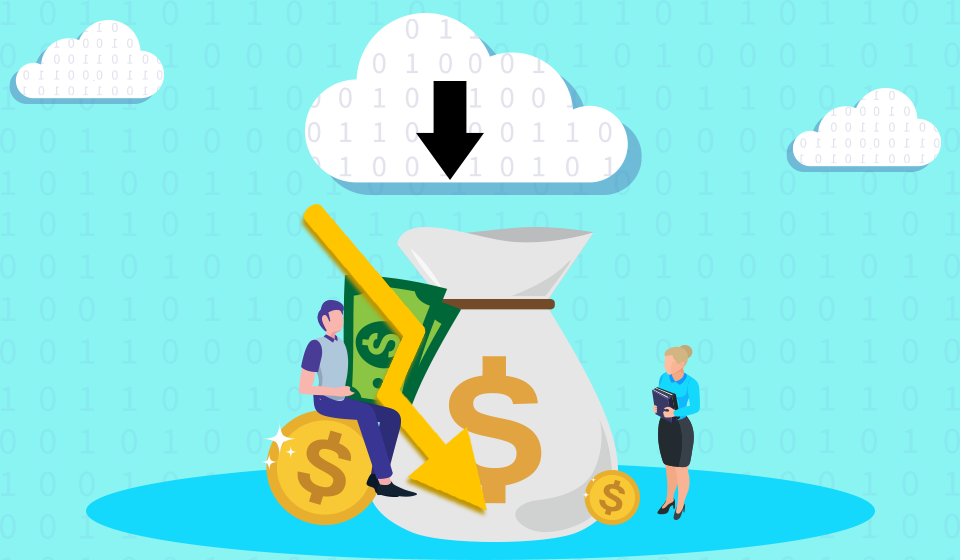Strategies to Reduce Your Cloud Costs

Optimizing resources and performance in the cloud is the top priority for organizations seeking to cut their next cloud bill. Following these best practices can help you manage your cloud resources and performance and save money on your next cloud bill.
It can be hard to gain an objective perspective on the factors driving your cloud expenses, no matter how long you’ve been working in the cloud. Your costs may skyrocket if you are not able to do so.
A Gartner report estimates that 70% of cloud computing costs are squandered. By investing in the cloud rather than saving money, you may find that your expenses are increasing. You may not know the reason or amount for your company’s expansion without adequate visibility.
What is Cloud Cost Optimization?
The process of cloud cost optimization includes identifying and optimizing cloud resources to reduce overall cloud spending with some best strategies, techniques, practices, and tools. By optimizing your cloud costs early, you can ensure that you are getting the most bangs for your buck. It aims to save on IT expenses while reinvesting in new technology to boost firm growth or profitability. Cloud cost optimization is especially important if you’re using a hybrid cloud (where some resources are on-premises and others are in the cloud) or if you have a large AWS account.
Some common strategies for cloud cost optimization include:
- Identifying and eliminating misallocated or wasted resources.
- Using discounts to increase resource allocation for less
- Reducing cloud waste by allocating computing resources based on workload and application requirements
Let’s take a look at methods to help you minimize your cloud expenditures.
Best Ways To Optimize Your Cloud Costs
Your cloud costs are directly related to your data center utilization. There are many things you can do to keep your cloud costs down. Here are a few of the best ones:
Autoscaling can help you save money
In the cloud era, demand for IT services is constantly increasing, and to keep up with this growth and ensure availability, organizations need to scale up their IT resources. However, scaling operations in the cloud poses significant challenges.
One of the main challenges is cost. IT costs are typically high in traditional datacenters because they need to be maintained and updated regularly. In the cloud, however, IT costs are low because they are only running when needed. As a result, organizations can save money by scaling up their IT resources and services in the cloud.
Another challenge is capacity planning. In order to balance capacity across all available resources, organizations need to monitor their capacities regularly and adjust them accordingly. It is time-consuming and requires careful planning and coordination between multiple teams.
Organizations can adopt automated scalability solutions such as autoscaling to address these challenges. Autoscaling solutions automate resource provisioning by scaling up or down depending on demand changes or other factors that affect service peaks or troughs within a defined time span. It helps organizations save money while also maintaining performance and availability levels.
Identifying Mismanaged Resources
Mismanaged cloud resources can lead to several issues, from inefficient storage and computing power to poorly configured security policies and untested applications. By spotting the signs of mismanagement early on, IT teams can proactively prevent resource issues from affecting their business.
There are three main types of mismanagement: resource waste, spending on unnecessary items, and cost avoidance.
Resource waste can be caused by inefficient usage of cloud services.
Spending on unnecessary items is a result of not having a clear business case for cloud use.
Cost avoidance occurs when organizations unnecessarily spend money on the technology they don’t need or that they never planned to use.
To identify mismanagement in your organization, start with a review of existing cloud usage. Are there any areas where you are underutilizing your resources? Is there anything you are doing that you don’t need to be? Next, conduct a top-to-bottom audit of your cloud resources and compare them against your budget and requirements. Finally, if you find areas that need improvement, take action before it is too late. Only then will you be able to know whether or not cloud computing is right for your business.x
Use Reserved Instances (RI)
We all have heard about the cloud, but how much do we really know about it? Many companies are hesitant to adopt cloud solutions because they believe it is too expensive. However, there are many cost-saving benefits to using the cloud. One of the advantages is that you can reserve instances of your cloud services in advance for a specific amount of cloud capacity for a predetermined amount of time (e.g., a year). You can save money by reserving instances before they are needed.
Another benefit is that you do not need to pay for idle resources. If you have many servers, you can reserve them as RI (reserved instances). When there are no users or applications set up on an instance, it resumes its functionality and is available to be used again. By reserving instances in advance, you decrease costs and increase availability.
Use Heat Maps
Cloud computing is a rapidly growing segment of the IT industry. It allows organizations to access and share resources remotely, reducing costs by leveraging the power of remote servers. However, cloud computing comes with its own challenges, including security and performance issues.
To optimize cloud costs, you can use a cloud cost management tool to analyze your current environment and identify areas for improvement. Heat maps are excellent for monitoring cloud spending. With the information of this visual tool, you can avoid paying for unused services and lower your cloud costs by configuring them to run only when needed. By taking these steps, you can ensure that you’re getting the most out of your cloud investments.
Computing Services Should Be Rightsized
To rightsize your cloud services, you must get an overall picture of them. You might have to centralize your IT or ensure that each department uses the same cloud account to accomplish this. You might identify over-provisioned or unused resources by having granular visibility. The rightsizing tool recommends adjusting usage and reducing costs.
It also optimizes the cloud by helping you get the most out of your paid resources. Rightsizing tools notify you when the expenses exceed a defined percentage in a pre-specified period. You may also set the tool to eliminate unused resources after the period is over to continue optimizing your cloud expenses.
Eliminate Shadow IT
When employees use a company’s cloud services for their benefit, the spending is known as shadow IT. Although most of your technology spending is attributed to projects handled outside (and without the knowledge of) your IT department, shadow IT happens when employees utilize company cloud resources for their benefit.
Because it increases costs, shadow IT also leads to unaccounted data access and security risks. To prevent employees from using cloud services without permission, you should educate them about the dangers of shadow IT, conduct regular audits, and block unauthorized apps.
Conclusion
For many companies, the main goal of using cloud services is to reduce their IT cost. In this case, it is clear that the more computing power and storage you have in the cloud, the lower your cost will be. However, there are also other factors that can affect your cost. For example, if you need to add a new server or installation costs, then it will increase your costs.
Another way to reduce costs is by optimizing your infrastructure. For example, you can implement data center automation (like server monitoring) and a control system (like alerts for over-heating and lost data). You can also use virtualization software to reduce the number of servers. All these actions will allow you to reduce operational costs by optimizing how you use resources.






